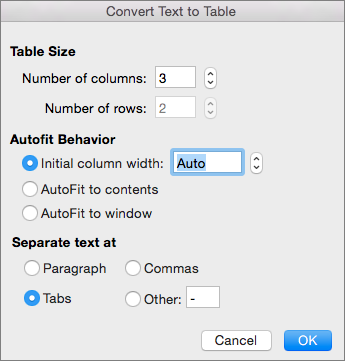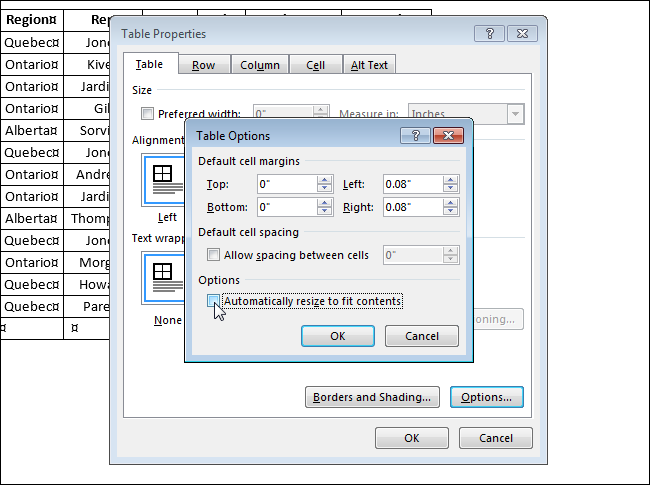

This will force Excel to change the height of the row to accommodate the unusually tall text.įor rows, you can use a very similar keyboard shortcut of ALT + H + O + A to autofit row heights. To fix this, select the row with the cut-off text and click on Format > AutoFit Row Height. When this happens, text will be cut off rather than spill over into another row either above or below. I set up templates for printing from Word, InDesign and Acrobat, but also prints. When pasting data into an Excel worksheet, there are times when the row heights do not adjust automatically. Then find your size of paper stock in the right column and - voil. Therefore, the AutoFit Row Height feature found on the Format button is not as useful as the AutoFit Column Width feature. Unlike column widths, Excel automatically adjusts the height of a row to accommodate the height of the text that takes up the most vertical space in each row.
#Change column width in table, word for mac full#
So the full key combination is ALT + H + O + I. You can let go ALT and H once you have pressed them. Just press ALT + H and then press O and then I. You can also use a keyboard shortcut to autofit columns in Excel. If you want to reset all column widths back to the default width, just select Format – Default Width and type in 8.43. Note that you can also autofit a column by simply selecting the column or columns and then double-clicking on the right-hand boundary of any selected column. On the Format button’s menu, select AutoFit Column Width and notice that the width of Column A has changed to contain the length of the text in the A1 cell. This option will change the size of the column to a new size depending on the length of the contents of the cell in the column that takes up the most space.ĭefault Width – This option doesn’t actually change the width of any columns it simply changes the default width of the columns for a particular worksheet. This option isn’t useful because you can more easily accomplish the same thing by simply dragging the column to your desired size.ĪutoFit Column Width – This is the option we want. Notice that there are three options for changing the width of a column.Ĭolumn Width – This option lets you manually change the width of a column by typing in a number. Select Column A, click on the Home tab on the Ribbon, and locate a section of the Ribbon almost all the way to the right labeled Cells.Ĭlick on the button titled Format and locate a section of the menu labeled Cell Size.

Notice that although the column’s width cannot contain the length of the text, Excel allows the text to spill over into adjacent columns. Suppose in your Excel worksheet you have text in the A1 cell that extends beyond the 8.43 (64 pixels) default column width. The default size of an Excel row is 15, which correlates to 20 pixels or about 1/5th of an inch. This number represents the how many 1/72nds of an inch the row can hold.


 0 kommentar(er)
0 kommentar(er)
